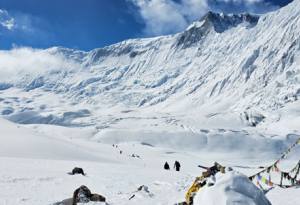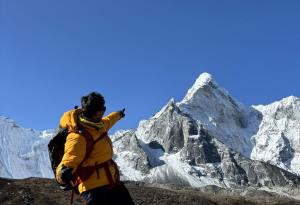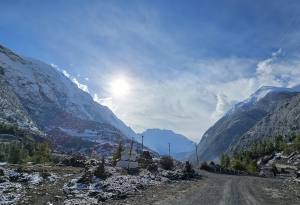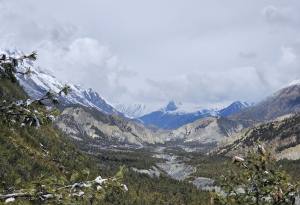A Guide to Responsible Trekking: Leave No Trace in Nepal
Nepal boasts some of the most stunning trekking routes in the world, from the famous Everest Base Camp to the peaceful Annapurna Circuit and the remote paths in Dolpo and Manaslu. However, as more travelers flock to these sites, the delicate mountain environment faces greater stress.
It's our joint responsibility to protect these beautiful landscapes and support the communities that live there. The “Leave No Trace” philosophy is crucial here. It's not just a saying; it's a way of thinking that helps ensure future generations can enjoy the same natural beauty we do.
What Does “Leave No Trace” Mean?
The Leave No Trace (LNT) principle promotes responsible travel and sustainable practices. It’s built on seven basic principles that aim to reduce human impact on nature. Here’s how to apply them while trekking in Nepal’s Himalayas:
1. Plan Ahead and Prepare
A responsible trek begins before you even lace up your boots.
- Research your destination, required permits, and local customs.
- Choose eco-friendly trekking agencies or guides.
- Avoid trekking during busy seasons to lessen environmental impact.
- Pack reusable water bottles, solar chargers, and minimal plastic.
2. Travel and Camp on Durable Surfaces
Stay on established trails and campsites, especially in fragile alpine zones.
- Taking shortcuts erodes paths and damages plants.
- Walk in a single line through muddy spots.
- Avoid trampling meadows or newly planted areas.
- Set up camp only in designated places or previously used clearings.
3. Dispose of Waste Properly
The guiding principle is simple: "Pack it in, pack it out." Carry all your trash, including small items like wrappers or tissues, until you find a proper disposal area.
- Bring a reusable bag for your waste.
- Avoid single-use plastics (like bottles and wet wipes).
- Use biodegradable soap and toothpaste away from water sources.
4. Leave What You Find
Take only memories and photos — leave everything else behind.
- Do not collect stones, flowers, or cultural artifacts.
- Avoid touching or moving religious items (such as mani stones or prayer flags).
- Respect local culture and traditions.
5. Minimize Campfire Impact
Campfires can spark wildfires and deplete limited wood in high-altitude areas.
- Use a gas or kerosene stove for cooking.
- If you need a fire, use existing fire rings and keep the fire small.
- Never burn plastic or waste.
6. Respect Wildlife
Nepal’s mountains are home to snow leopards, musk deer, Himalayan monals, and many other rare animals.
- Observe wildlife from a distance.
- Do not feed them, as this changes their natural behavior.
- Keep noise to a minimum.
7. Be Considerate of Others
Trekking trails are shared spaces. Treat fellow trekkers, locals, and porters with kindness and respect.
- Yield to hikers going uphill.
- Greet locals with a friendly “Namaste.”
- Keep your noise level low and avoid disturbing village life.
Why Responsible Trekking Matters in Nepal
The Himalayas are not just mountains; they are living ecosystems and cultural areas. Irresponsible trekking can cause pollution, erosion, and cultural disruption. By trekking responsibly, you can: Help preserve Nepal’s delicate environment. Empower local communities through fair tourism. Ensure that future trekkers can enjoy the same natural beauty.
Join the Movement for Sustainable Travel.
At Ascent Holidays Pvt. Ltd., we are dedicated to eco-friendly adventures that honor nature and culture. We promote plastic-free treks and support community lodges because we believe every step counts. Together, let’s protect the Himalayas — one responsible trek at a time.
Traveling responsibly is not about doing less; it’s about doing it better. Nepal’s magic lies in its untouched beauty and welcoming people. When you leave no trace, you create positive footprints that inspire others to follow your lead.
Recent Post
-

Save The Himalaya
Trekking Tips -

Discover the majestic Annapurna Region: A Trekker's Paradise
Trekking Tips -

Trek To Everest Region
Trekking Tips -

Festivals and Cultural Highlights of Nepal – A Celebration of Devotion and Diversity
Tourism In Nepal -

Adventures Beyond the Summit: Things to Do on Mount Everest
Trekking Tips -

Top 10 Trekking Routes in Nepal for 2025
Trekking Tips -

Nepal: Where Nature’s Majesty Meets Timeless Beauty
Tourism In Nepal -

Everest Base Camp vs Annapurna Base Camp Trek | Which is Best for You?
Tourism In Nepal -

A Guide to Responsible Trekking: Leave No Trace in Nepal
Trekking Tips